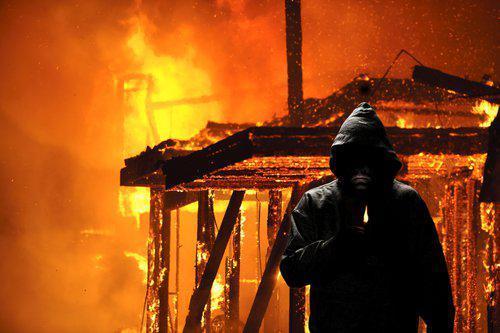Unmasking the Many Faces of a Criminal Arsonist
 As per the National Fire Protection Association (NFPA), from 2007-2011, more than 282,000 intentional fires have been reported to various U.S. fire departments. These incidents are associated with an annual loss of civilian life totaling 500 innocent victims and are also responsible for over 1,000 civilian injuries and costs reaching $1.3 billion in direct property damage.
As per the National Fire Protection Association (NFPA), from 2007-2011, more than 282,000 intentional fires have been reported to various U.S. fire departments. These incidents are associated with an annual loss of civilian life totaling 500 innocent victims and are also responsible for over 1,000 civilian injuries and costs reaching $1.3 billion in direct property damage.
Robert Disbrow, Jr., who has spent over 20 years investigating suspicious fires and a frequent contributor to the website Firehouse.com, believes there are repetitive patterns of arson that can be sub-classified as those who fall into a serial, spree or mass arsonist categories.
The Serial Arsonist
This type of arsonist often sets as many as three fires at different locations with each incident exhibiting a cooling off period between each event.
The Spree Arsonist
Those who fall into this classification will have set at least three fires at different locations but without a cooling off period.
The Mass Arsonist
Perhaps the most dangerous, are those who set multiple fires at the same time and within the same location.
Aside from these classifications, Disbow believes that there are also six varying types of motives fueling an arsonist’s desire to set fires.
Vandalism
This category of arson involves the mischievous or malicious act of arson. This type of arsonist generally sets fires to abandoned structures, vehicles, educational facilities, often to disguise another crime such as burglary or theft.
Excitement
Those arsonists who fall into this category are the thrill seekers. Often those who are employed as security guards, night watchmen and even members of a fire company take pleasure in seeking hero status or those who revel in praise or recognition from fighting the fires that they started.
Revenge
Perhaps the most dangerous motive is those seeking retaliation or vigilanty justice. Targets are often specific individuals, institutions or societal groups. Revenge arson generally targets a person’s home, business location, vehicle or treasured possession. Arsonists in this category may also target corporations, medical, educational or religious structures.
Profit
Those who engage in arson for profit may be seeking restitution as a means to solve financial problems. Often they will use arson as a basis to commit insurance fraud or even eliminate competition from a business competitor. Destruction of residential property for profit or intimidation as well as commercial fraud is exhibited by arsonists who are trying to erase bad business practices.
Extremism
Acts of arson under the Extremism category involve those who use arson to further one’s personal cause. These arsonists believe that by targeting a certain political, religious or social group will bring attention to their group’s plightIf you have fallen victim to an accusation of arson, the Milwaukee criminal defense attorneys of Gimbel, Reilly, Guerin & Brown, LLP maintain an exemplary tradition of defending individuals and institutions accused of criminal conduct. Our criminal defense team, comprised of former federal prosecutors, a former police officer and special agent with the justice department and other skilled criminal law litigators maintain a strong record of defending against all state and federal criminal charges. Contact our legal team today to discuss your situation.
Sources:
http://nfpa.org/research/reports-and-statistics/fire-causes/arson-and-juvenile-firesetting/intentional-fires
http://firehouse.com/article/10464930/arson-investigation-the-six-motives-for-firesetting
http://firehouse.com/contact/10462672/robert-disbrow-jr







